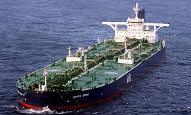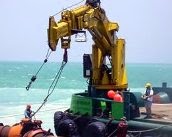CBM Asia reported plans for the Kutai West PSC development. CBM Asia’s primary goal for 2014 is to commercialize the Kutai West Production Sharing Contract (PSC) in East Kalimantan, Indonesia, located near the Bontang LNG export facility. Achieving early-stage commercial production will help unlock the value of this asset, which is situated close to high-priced Asian gas markets.
CBM Asia holds an 18% working interest in the Kutai West PSC, representing 705 Bcf of recoverable prospective resources net to CBM Asia from the total 3.9 Tcf estimated by an independent audit conducted in 2013 by Netherland, Sewell & Associates. Kutai West is regarded as one of the best and commercially most advanced of the more than 50 awarded CBM blocks in Indonesia.
Kutai West is adjacent to the Sanga-Sanga PSC, where VICO (BP and partners) is commercially producing and selling CBM for power generation and gas to the nearby Bontang LNG facility. As VICO notes: “This is the first time in Indonesia that any CBM facilities have produced and sold gas and represents a major milestone in the exploration of CBM potential.”
Kutai West will produce from the same coal seams as at Sanga-Sanga. To date, the company and its partners have drilled four CBM test wells on the block, verifying thick coal seams (average 105 ft) with high gas content (average 300 ft3/ton; dry, ash-free basis) and gas saturation (close to 100%), as well as 5-mD permeability. The KWCBM-01 well is currently being dewatered, venting produced gas from the flare stack, which is a key first step towards larger scale production.
Management’s main focus this year is to initiate commercial gas production at Kutai West with a 5-well pilot, followed by a larger commercial scale 25-well development (total 30 wells). To this end CBM has reached consensus with its partners to sell the produced gas to locally installed gas engine power generation units selling power into the PLN grid and later to feed gas into the gas-short Bontang LNG export network. Anticipated gas prices are $8/Mcf or higher. Bontang exports LNG to Japan and other Asian rim importers, which are critically short of natural gas.
Under Phase 1 four new CBM wells will be drilled near the existing KW-CBM01, forming an effective dewatering pilot on tight 40-acre spacing to accelerate gas production and demonstrate commerciality. Produced gas estimated at 2.0-2.5 MMcfd (gross) would be sold to a power station developer/operator and PLN for on-site power generation at about $8/Mcf. The government of Indonesia strongly supports such commercialization prior to formal Plan of Development (POD) approval. Total capex for Phase 1 is estimated at $7.16 mn, comprising four wells at $1.46 mn/well cost (drilling & completion, water management, and surface facilities) plus $1.32 mn in engineering and overhead costs. An additional $200,000 would be required for field operating expenses during the first year. CBM Asia’s share of the Phase 1 costs is estimated at $2.15 mn.
The 10-MW power station would employ an array of 1-to5-MW reciprocating engines; hundreds of such installations already are in operation throughout Indonesia.The power station would be independently owned and operated, with no capital required from CBM Asia. Drilling and completing the wells would require about two months, plus an additional four months to install and commission the power plant. An updated engineering audit would be conducted to certify proved and probable reserves, with an excellent chance of qualifying the project for low-cost Phase 2 project financing.
Following success in Phase 1 and the approval of the Phase 2 POD, CBM Asia and its partners would utilize two rigs to drill an additional 25 wells (30 total) over a 7-month period. The increased production initially would supply the power station. Pending successful conclusion of a sales agreement, a 12-in., 20-km pipeline would be constructed to the Badak compressor station by a third party under BOO basis and funded via an estimated $0.50/Mcf transport tariff. Total capex for phase 2 is estimated at $36.3 mn with CBM Asia’s share of costs estimated at $8.0 mn. Production estimated at 12.5 MMcfd (gross) would be sold into the Bontang LNG export network at approximately $8/Mcf or more. Note that Bontang is the world’s second largest LNG plant (22.5 mtpa), shipping primarily to Japan, but local conventional gas supplies are in decline and the facility is currently operating at less than 60% of capacity.
“The Kutai West and Sekayu PSC’s both have substantial engineered resources for commercialization, but Kutai West is most viable for near-term commercial development” noted President and CEO Charles Bloomquist. “We are focusing our efforts on achieving commercial production and gas sales at the block as soon as possible, likely before the end of 2014. We estimate that with completion of the Phase 2 development CBM Asia will be operational cash flow positive. Jointly with its partners the company has developed a technical plan and budget for the Kutai West commercial development and will post details in a new presentation on its website in the coming days.”
Providing useful resources, articles and writings on crude oil, other petroleum products, energy and gas. By Blockline and Associate Ltd Nigeria Ltd, online.

 Nigeria Bonny Light Crude Oil (BLCO, FLCO and ALCO, etc): We sell mostly on FOB, CIF, TTO and TTT/STS Basis.
Nigeria Bonny Light Crude Oil (BLCO, FLCO and ALCO, etc): We sell mostly on FOB, CIF, TTO and TTT/STS Basis. We sell and lease tug-boats of all kinds.
We sell and lease tug-boats of all kinds.
